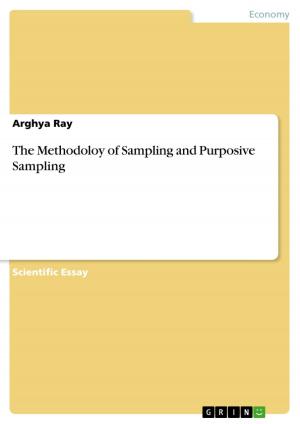| Author: | Nicole Hahn | ISBN: | 9783638548212 |
| Publisher: | GRIN Publishing | Publication: | September 24, 2006 |
| Imprint: | GRIN Publishing | Language: | English |
| Author: | Nicole Hahn |
| ISBN: | 9783638548212 |
| Publisher: | GRIN Publishing |
| Publication: | September 24, 2006 |
| Imprint: | GRIN Publishing |
| Language: | English |
Seminar paper from the year 2004 in the subject English Language and Literature Studies - Linguistics, grade: 2,3, University of Wuppertal, course: Contrastive Phonology, 2 entries in the bibliography, language: English, abstract: The constraints on sequences of segments are called phonotactic con -straints or phonotactics of a language. Word phonotactics in English are based on syllable phonotactics. This means that only clusters which can begin a syllable can begin a word and that a possible cluster at the end of a syllable can end a word. In multisyllabic words, the clusters consist of syllable final and syllable initial sequences. A word like instruct can be divided into well-formed syllables /In $ str?kt/, because the word final and initial syllables consist of possible constraints in English. The arrangement of different phonemes is restricted. Some sequences are possible but have no meaning; some are not possible words in the English language. Nonsense words are possible words, respectively possible sequences of sounds of a particular language. They can be seen as accidental gaps in the vocabulary. The word Crike [krajk] obeys the phonological rules of the English language, but does not have any meaning. This phenomenon must be distinguished from non-words. Their sequences have no meaning either, but their sequences are not possible words of a language (For example bkli). If a form is not allowed by the phonotactics of a language there is said to be a systematic gap in the vocabulary. (Fromkin, Victoria. Rodman, Robert. An Introduction to Language. 6th edition. Hardcourt Brace College Publishers. United States of America. 1998)
Seminar paper from the year 2004 in the subject English Language and Literature Studies - Linguistics, grade: 2,3, University of Wuppertal, course: Contrastive Phonology, 2 entries in the bibliography, language: English, abstract: The constraints on sequences of segments are called phonotactic con -straints or phonotactics of a language. Word phonotactics in English are based on syllable phonotactics. This means that only clusters which can begin a syllable can begin a word and that a possible cluster at the end of a syllable can end a word. In multisyllabic words, the clusters consist of syllable final and syllable initial sequences. A word like instruct can be divided into well-formed syllables /In $ str?kt/, because the word final and initial syllables consist of possible constraints in English. The arrangement of different phonemes is restricted. Some sequences are possible but have no meaning; some are not possible words in the English language. Nonsense words are possible words, respectively possible sequences of sounds of a particular language. They can be seen as accidental gaps in the vocabulary. The word Crike [krajk] obeys the phonological rules of the English language, but does not have any meaning. This phenomenon must be distinguished from non-words. Their sequences have no meaning either, but their sequences are not possible words of a language (For example bkli). If a form is not allowed by the phonotactics of a language there is said to be a systematic gap in the vocabulary. (Fromkin, Victoria. Rodman, Robert. An Introduction to Language. 6th edition. Hardcourt Brace College Publishers. United States of America. 1998)















